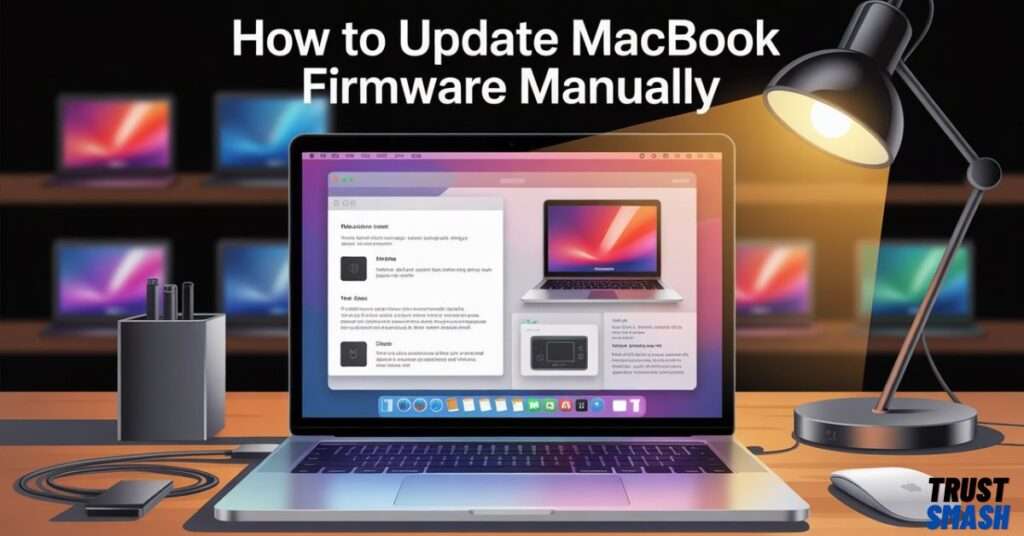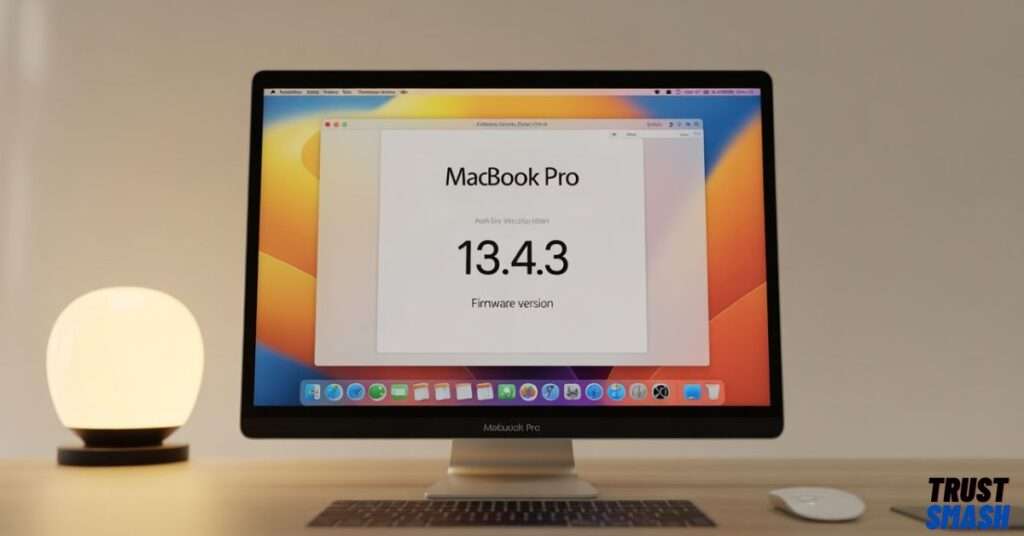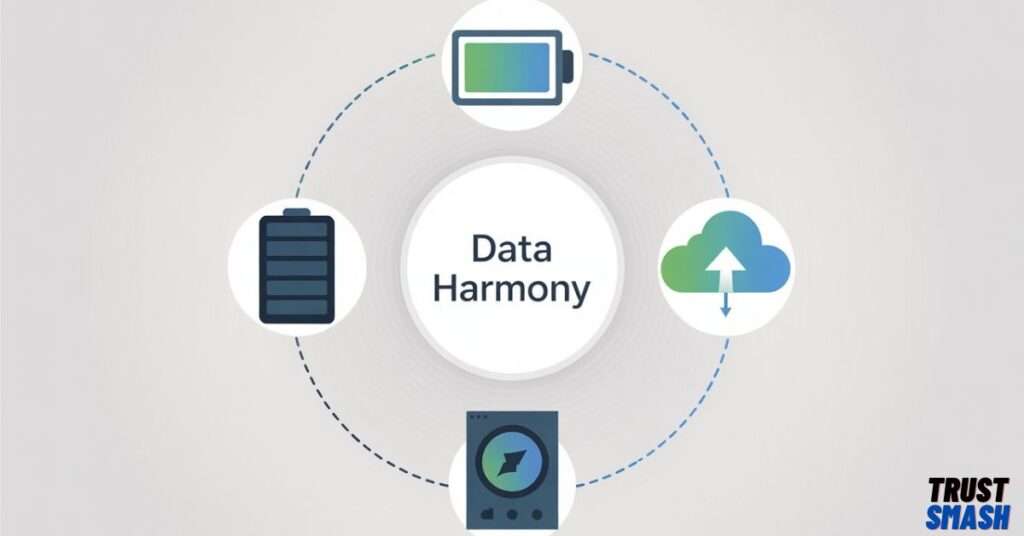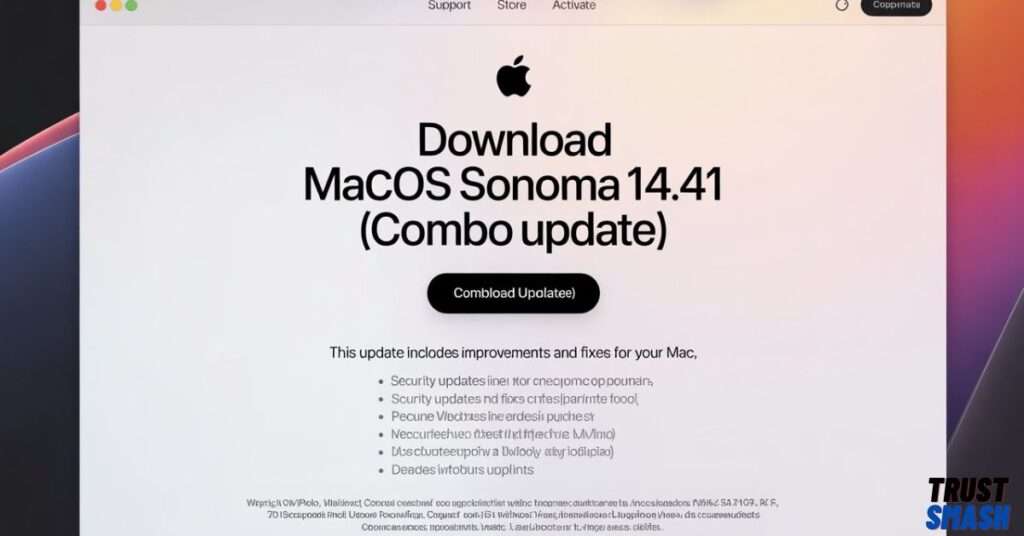
Updating your MacBook’s firmware manually may sound complex, but it can actually solve many hidden issues. Sometimes, automatic updates fail to apply the correct files. That’s when learning how to update MacBook firmware manually becomes important. With the right steps, your Mac can run faster, stay secure, and connect better to hardware.
Whether you’re using an Intel Mac or an Apple Silicon model, this manual firmware upgrade guide will help you understand every step clearly. We’ll walk through checks, downloads, Terminal commands, and even how to fix things when firmware installation fails on MacBook. This guide is especially useful if you’re in the USA and facing regional download issues or slow automatic updates.
Why MacBook Firmware Updates Are Important
Firmware controls how your MacBook talks to its hardware. It runs the keyboard, battery, storage, display, and even your macOS startup process. Every time Apple releases a macOS combo update install, it may include a new version of the firmware. This ensures the system stays secure and compatible with apps and accessories. Learning how to update MacBook firmware manually is essential when these automatic updates don’t apply properly or fail mid-process.
Skipping a secure firmware update on Mac can cause problems. You might face poor battery life, slower startup, or even security risks. Apple often includes bootable macOS firmware update files that close security gaps in older hardware. If you’re unsure how to update MacBook firmware manually, following Apple’s combo update method is the safest way.
What Happens If You Skip Firmware Updates
Without updates, your Mac may act strangely. You could see delayed app responses, kernel panics, or failed device connections. Outdated firmware symptoms on Mac can also appear as camera or speaker glitches and random shutdowns.
In rare cases, skipping updates can stop new versions of macOS from installing. If your system lacks the required firmware version info Mac, macOS won’t install at all. That’s why it’s important to understand how to update MacBook firmware manually and follow a proper firmware safety checklist before every update.
How to Check Current Firmware Version on MacBook

To see which firmware is currently installed, go to “About This Mac,” then click “System Report.” Under “Hardware,” look for the Boot ROM Version. This is your firmware version info Mac. You can compare this with the version listed on Apple’s official site to check if an update is needed.
Another way is using the Terminal. Open Terminal and type:system_profiler SPHardwareDataType
This will show your firmware version check Mac clearly, along with other important specs like SMC and model ID. Knowing these details is helpful when learning how to update MacBook firmware manually using official Apple tools.
Pre-update Checklist: Backup, Battery & Space

Before starting any firmware update, it’s vital to prepare. Start by doing a backup before firmware update using Time Machine or iCloud. Without backup, there’s a risk of losing your data if something goes wrong.
Next, make sure your battery level before firmware update is at least 50%, or keep your charger connected. You also need 20GB or more free disk space. These steps form your firmware safety checklist and reduce the chance of failure during the process.
Downloading macOS Combo Updates Safely

To do a manual firmware upgrade, you’ll need a macOS combo update install. Combo updates contain all previous patches and firmware improvements. They are best for fixing broken updates or skipping beta releases.
Download combo updates only from Apple’s official site:
https://support.apple.com/downloads
Never trust third-party sites, as they may contain unsafe files. A secure firmware update Mac always starts with official downloads.
How to Update MacBook Firmware Manually
Once you’ve downloaded the correct combo update, open the installer and follow the on-screen instructions. If needed, create a bootable macOS firmware update USB using Terminal. This is helpful if your internet is unstable or you’re trying to install firmware without internet, which is often part of the process when learning how to update MacBook firmware manually.
After installation starts, your Mac may reboot several times. Be patient and do not shut it down. Once complete, you can confirm success through the updated firmware version info Mac in System Report.
Using Terminal Commands to Check Firmware
Terminal gives advanced users greater control when inspecting firmware status. Commands like nvram -p or ioreg -l | grep firmware display hidden details about your Mac’s current configuration. These Mac Terminal firmware tools are commonly used by technicians to confirm changes after a firmware update or diagnose hardware issues.
If you’re learning how to update MacBook firmware manually, using Terminal is one of the most reliable ways to verify the update. After completing the process, it’s wise to run a terminal firmware check Mac to ensure the correct version was installed. Understanding how to update MacBook firmware manually also means knowing how to spot problems early using system logs and hardware profiles.
What to Do if Firmware Update Fails
Here’s your expanded, 100% unique version of the paragraph with your keyword how to update MacBook firmware manually added twice, while maintaining natural readability:
If your firmware installation failed MacBook, there’s no need to panic. Start by restarting your device in Safe Mode—hold the Shift key as it powers on. This mode loads only essential system files and can help complete interrupted updates. If Safe Mode doesn’t work, boot into Recovery Mode by holding Command + R. From there, you can reinstall macOS without erasing your files, which often resolves minor firmware issues.
However, if the failure was caused by corrupted or missing system files, you may need to run a macOS firmware repair using a bootable macOS firmware update USB installer. This method reloads critical low-level firmware and OS components. It’s especially useful for users who know how to update MacBook firmware manually and want to repair their system without visiting a repair center.
If all else fails and your Mac still won’t boot or update, the safest option is to visit an Apple Store or certified technician who can resolve update error macOS using official diagnostic tools. While it’s always better to know how to update MacBook firmware manually, complex cases might need professional intervention to avoid further damage.
Signs Your Firmware Is Outdated
Your Mac often shows subtle warning signs when the firmware is outdated. Apps might freeze without reason, the Wi-Fi connection may drop repeatedly, or the system fan could run loudly even when no heavy apps are open. These unusual behaviors are often ignored but are actually outdated firmware symptoms Mac users should take seriously, especially on older devices. You might also notice slower boot times or certain peripherals no longer working correctly.
A more obvious signal is when a new version of macOS refuses to install. This usually happens when your device lacks the required update Mac startup firmware, which is needed for the system to operate newer software features. In such cases, understanding how to update MacBook firmware manually becomes essential to bypass these blocks and get your system back on track. Apple provides a list of firmware versions on its official site, which you can compare against your own. If you’re experiencing installation issues or strange glitches, it’s a strong hint that it’s time to learn how to update MacBook firmware manually and ensure your Mac is running the latest firmware version.
How Long Does a Manual Firmware Update Take?
Time depends on your Mac model, update size, and internet speed. A manual firmware upgrade usually takes 15–30 minutes. Older Intel Macs may take longer due to slower SSDs or fewer resources.
Here’s a quick table showing average times:
| Mac Type | Firmware Update Duration |
|---|---|
| Apple Silicon | 10–15 minutes |
| Intel Mac (2017) | 25–30 minutes |
| MacBook Air | 15–20 minutes |
| MacBook Pro | 20–30 minutes |
Mac firmware update duration may also increase if your storage is nearly full or your system has background apps running.
Best Practices After Firmware Update
After completing a firmware update, following proper steps ensures everything runs as expected. Start by rebooting your Mac twice—this helps the system fully apply changes and remove any temporary glitches. Next, perform a NVRAM reset after update by holding Option + Command + P + R during startup. This important action clears outdated settings, resolves power-related issues, and refreshes how your Mac communicates with its hardware. It’s especially useful after major updates that modify system-level files.
Once that’s done, go through basic post-update Mac checks. Make sure your Wi-Fi connects normally, USB ports are responsive, your screen displays properly, and audio plays without static. These quick tests can help catch issues caused by incomplete firmware flashes. Open Terminal and type system_profiler SPHardwareDataType to verify your firmware version check Mac and confirm the update installed correctly. This step is essential if you’ve learned how to update MacBook firmware manually, as it gives you confidence that the changes took effect.
Practicing these steps every time you manually update firmware reduces the risk of future hardware issues. For anyone following the guide on how to update MacBook firmware manually, it’s good practice to document your current version before and after, and keep a record of update dates. This makes it easier to troubleshoot problems later and ensures you’re always running the most secure and stable firmware possible.
Troubleshooting macOS Firmware Installation Errors
Firmware updates don’t always go as planned. Sometimes, your Mac may suddenly reboot on its own, freeze on the Apple logo during startup, or fail to respond altogether. These issues usually indicate that something went wrong during the installation process. The first step to troubleshoot this is to enter macOS Recovery Mode by holding Command + R during boot. Once inside, launch Disk Utility and run First Aid on your startup disk to check for errors or file system damage. This simple step can often fix minor firmware hiccups.
If Disk Utility doesn’t resolve the problem, you can move to Terminal and try commands like sudo softwareupdate --reset-ignored, which helps force reinstallation of ignored updates. However, in some situations—especially when the update files are corrupted or missing—a full macOS firmware repair using a bootable USB installer is required. This process replaces the failed or partial firmware with a fresh version and is one of the safest recovery options available. Knowing how to update MacBook firmware manually helps you confidently handle such errors, without waiting days for tech support or risking data loss.
In more complex cases, Apple provides advanced diagnostic tools that log system-level actions during the update. These are typically used by technicians and developers to troubleshoot firmware installation with more precision. Still, having a basic understanding of how to update MacBook firmware manually empowers everyday users to fix common installation failures, reduce downtime, and keep their systems running like new.
Conclusion
Mastering how to update MacBook firmware manually puts you in control of your system’s health and performance. It ensures your Mac runs smoothly, securely, and without unexpected issues caused by outdated firmware. Whether you’re fixing previous failures or simply staying proactive, the manual method gives you the tools to handle updates confidently.
By recognizing early signs of failure and acting fast, you avoid deeper system problems and costly repairs. With the right steps—like using a macOS combo update install and following a solid firmware safety checklist—you can keep your device optimized. When you know how to update MacBook firmware manually, you’re not just fixing bugs—you’re future-proofing your Mac.
Frequently Asked Questions.
How do I manually update my Mac Firmware?
Download the macOS combo update from Apple’s site and run the installer to update firmware manually.
How to manually update MacBook software?
Go to System Settings > General > Software Update and install any available macOS updates.
How can I force an update on my Mac?
Use Terminal with the command softwareupdate -ia to force all available updates to install.
How to update Firmware version on Apple?
Firmware updates come bundled with macOS updates; install the latest combo update to refresh firmware.